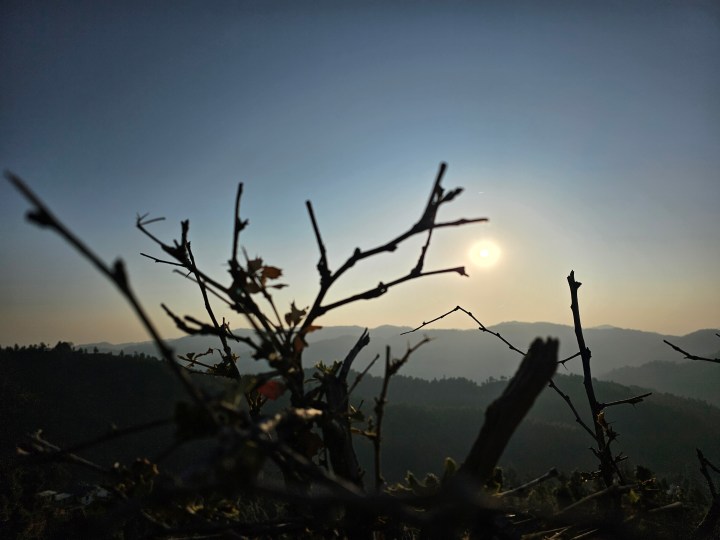The smartphone-versus-DSLR camera debate divides opinions rather sharply, and for good reason. Each has its own set of benefits and drawbacks. However, unless you’re doing photography for professional reasons, the phone in your hands is an extremely powerful imaging tool that can run circles around a DSLR or mirrorless camera.
I’ve been exploring the foothills of the Himalayas for the past few weeks and decided to take along Samsung and Apple’s best smartphones, instead of carrying a professional DSLR camera with me (one that, in total, costs around $4,000). My travel-logging companions have been the Samsung Galaxy S23 Ultra and the iPhone 14 Pro. I’ve been blown away by what these smartphone cameras can accomplish, and the dramatic upper hand they hold over your average DSLR camera in a healthy bunch of scenarios.
Night mode is the magic mode
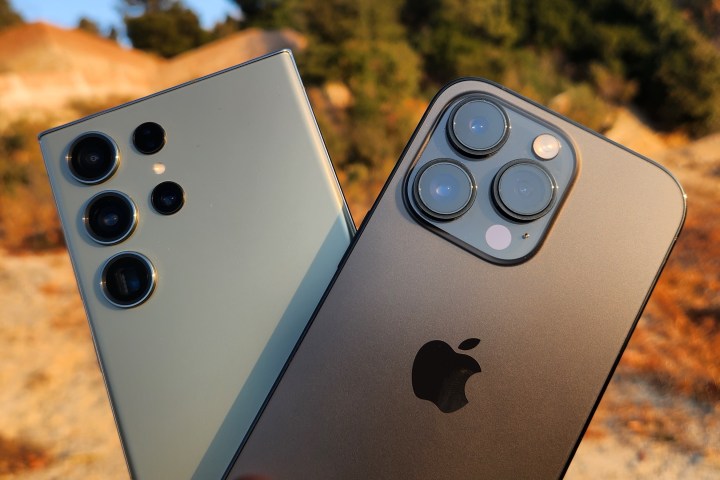
Yes, professional cameras deliver far better photos indoors and in scenarios with inadequate lighting. There is little noise, the subject separation is tighter, and the depth effect is adequate. But as things get darker, a DSLR camera’s sensor would need external lighting to bring out the elements in the frame. It’s not feasible in a secluded hut nestled in freezing forests, and that’s where tricks like computational photography do the magic.

I tried the night mode with both the iPhone 14 Pro and the Galaxy S23 Ultra, but it was the Samsung phone that delivered unbelievable results. Take, for example, the shot above that I clicked with the Galaxy S23 Ultra by getting the camera lens as close to the plant stem as possible without losing focus lock.
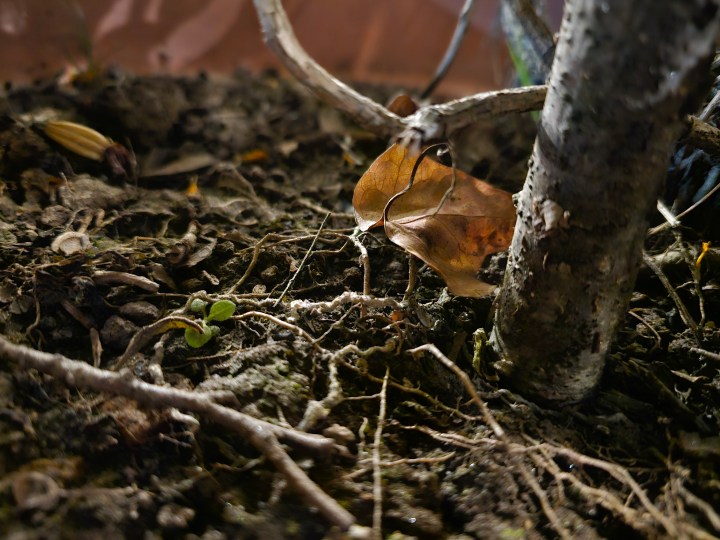
And here’s the Night mode shot with the photo capture duration manually set to its maximum value. Just look at the sheer amount of detail it has managed to extract from the dark surroundings.
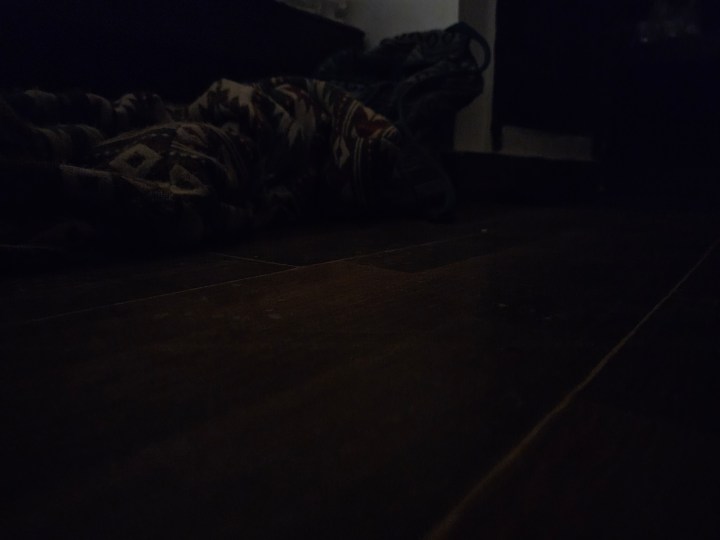
But that’s not even the most astounding shot I managed to capture with the dedicated night mode in the camera app. What you see above is an image that I took in a pitch-dark room with night mode disabled.

And above is the same scene taken with night mode enabled with around 6 to 7 seconds of capture time. I couldn’t see a single thing in the entire room with my eyes, but the Galaxy S23 Ultra managed to bring out the exact colors of the bag lying on the floor. And the best part is that the colors weren’t an oversaturated mess. I have never seen a DSLR or any professional camera pull off such a feat.
Optical zoom means business
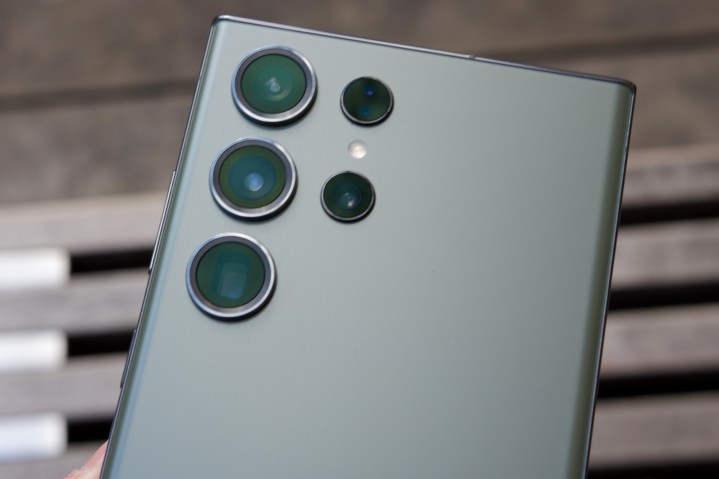
Going on a trip, especially in a natural landscape like a mountain valley, means you need to capture the entire view with wide. as well as magnified views. The standard lens kit of a DSLR will let you manage the former, but you will have to splurge a few hundred dollars on a zoom kit with anywhere between a 200mm to 400mm equivalent lens for long-range zoom shots.
Let’s carry the case over to smartphones. Now, I would never suggest that you take a photo with digital zoom. However, optical zoom on Apple and Samsung flagships won’t disappoint you. The iPhone 14 Pro’s 3x optical zoom may sound disappointing, but the results are anything but. With the Galaxy S23 Ultra, though, prepare yourself for a pleasant surprise.
Below is a set of photos I clicked at 1x, 3x, 30x, and 100x zoom levels with the Galaxy S23 Ultra, focusing on the round clock.
- 1. Ultrawide shot
- 2. Main camera shot
- 3. 3x zoom
- 4. Galaxy S23 Ultra (10x zoom)
- 5. 30x zoom
- 6. 100x zoom
The Samsung flagship’s 10x optical zoom range, courtesy of its periscope-style telephoto camera, is one of the most impressive tricks you’ll find on a phone. It goes even further with a 30x hybrid and 100x digital zoom range. Here’s another sample below to give you an idea of what the humble phone in your pocket can accomplish.
- 1. Ultrawide lens
- 2. Main camera
- 3. 3x zoom
- 4. 10x zoom
- 5. 30x zoom
- 6. 100x zoom
Now, the hybrid and digital zoomed-in shots aren’t the best in terms of sharpness, but it’s astounding to witness just how far down you can look within the frame — something that’s impossible with naked eyes — without spending a single dollar on any external contraption like you would with a professional DSLR camera.
These modes ain’t no joke
Apple and Samsung’s camera apps are brimming with cool tricks, both quirky and truly stunning. Samsung crammed 200 million pixels on the Galaxy S23 Ultra’s camera sensors, and it delivers some truly impressive results. By default, the main snapper clicks 12-megapixel shots, but with stable hands and a bit of patience, the 200-megapixel mode captures some spectacular photos. Below is a standard 12-megapixel pixel-binned shot.

What you see below is an 800% percent crop of a full-resolution 200-megapixel shot and the mind-bending amount of visual detail it can offer:
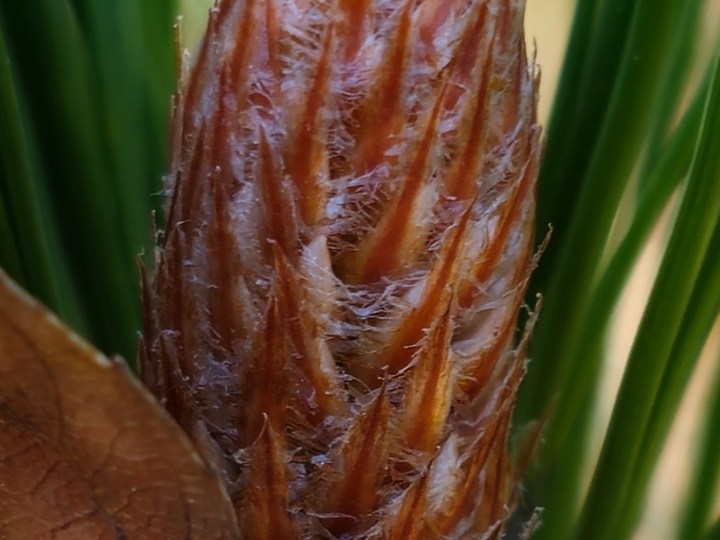
Next, I turned my attention to the Pro camera mode that gives you more control over the S23 Ultra’s shots. Now, it might look daunting when you first enter the Pro mode, but unlike a DSLR, you get to play with fewer controls. However, you can still manage to capture eye-catching artistic photos via trial and error.
I’m no DSLR photography wizard, but I only adjusted the ISO and white balance slider and managed to capture the sunrise in an altogether different color profile. Check out this comparison between an auto mode and Pro mode shot clicked with only two basic tweaks.
- 1. Auto mode
- 2. Pro mode
The best part is that you can replicate similar controls with video, thanks to the Pro video mode. Plus, these two phones also allow HDR10+, RAW, and cinematic mode video capture. And trust me, the super-steady video mode on each phone is something truly remarkable. Depending on your level of expertise at video editing, you can pull off some mesmerizing clips that will wow your social media friends.
Personally, I can’t get enough of the slow-motion videos that these two phones can capture. Apple, especially, has solved — to a large extent — the banding problem that has been plaguing slo-mo videos captured by smartphones.
Portrait mode is getting really good

Look, it’s hard to beat a DSLR with a smartphone camera. Why? There’s a world of difference between the gradual blur segmentation that you see in a dedicated camera shot compared to the flat bokeh in a smartphone portrait picture. But the situation has really improved over the years.
Both the Galaxy S23 Ultra and the iPhone 14 Pro do an amazing job at subject separation, but it’s the Apple flagship that races ahead here. The iPhone does a far better job at preserving real skin color, even against a challenging backdrop, and offers a much cleaner depiction of skin blemishes and other minute details.
I’ve also noticed that iPhones have come a long way at edge detection, while tricks like Deep Fusion lend a helping hand at preserving a stunning amount of detail. This is not only true for human subjects. but also pets.
I focused the iPhone 14 Pro’s lenses on dogs during my recent trip, and irrespective of whether I was using the wide or telephoto lens, the results were consistently impressive. Selfies weren’t any different, either. I also shot a few portrait mode videos and was stunned by the execution in terms of bokeh accuracy, color depth, and overall stability. This round definitely falls in Apple’s favor.
You’re good to skip the DSLR
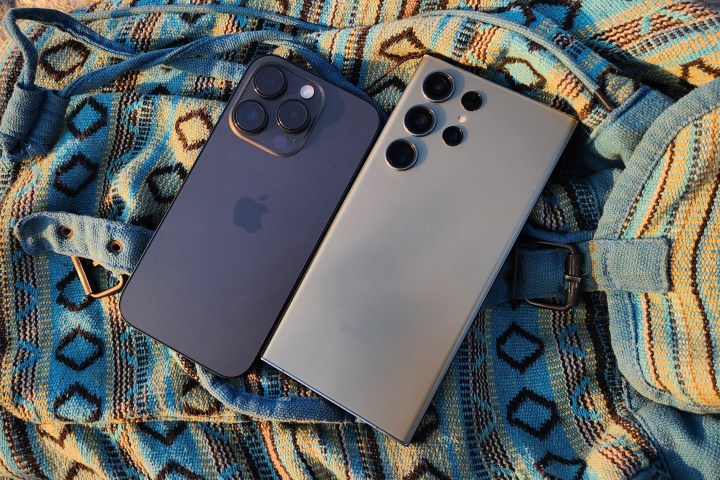
It doesn’t seem sane to argue about smartphone superiority when DSLRs offer benefits such as noticeably better sound quality, a comparatively higher degree of image adjustment controls, the flexibility of interchangeable lenses, and more. But smartphones answer those DSLR leg-ups with their own hefty set of advantages.
To start, phones are far lighter and more pocketable than DSLR cameras. While pocketability is one of the biggest advantages, the durability and ingress protection offered by phones is another practical area where smartphones are far ahead of a pricey camera kit. Plus, solutions like Gorilla Glass and Sapphire keep enhancing the durability of phones with each passing year.
Talking about practical advantages, smartphones make it extremely convenient to click high-quality photos even with their auto modes. But what I truly appreciate is the ability to share those photos on the fly, irrespective of whether I’m emailing RAW shots on assignments or just posting them on Instagram. Just take a look at the sample clips I captured with the iPhone 14 Pro without any complex manual controls or jazzy filters:
Captured on a phone! pic.twitter.com/EZ7bcCtPDV
— Nadeemonics (@nsnadeemsarwar) March 3, 2023
Another convenience that I can’t gush enough about is the larger viewfinder and how one can see all tweaks reflect in real time. Let’s also not forget the elephant in the room — the self-portraits, aka selfies. Imagine clicking a well-framed selfie all by yourself with a DSLR! Smartphones, on the other hand, make it extremely easy to capture high-quality selfies with all the snazz and jazz of filters and stunning portrait clicks.
On a comparative note, the Galaxy S23 Ultra proves to be a better holiday phone than the iPhone 14 Pro for a couple of reasons. First, it captures slightly more saturated pictures that are better-suited for social media posting than the iPhone 14 Pro’s realistic-but-slightly-muted colors. Second, the zooming capabilities of the Samsung phone are miles ahead of Apple’s top dog and really come in handy when taking a peek at far-out objects in your view.
At the end of the day, smartphones offer a ton of versatility without costing you the few thousand dollars a DSLR camera kit would. So, are phones like the Samsung Galaxy S23 Ultra and iPhone 14 Pro good enough to replace a DSLR for your next vacation? Absolutely. In fact, they make the whole process of capturing memories a lot more intuitive and convenient.












